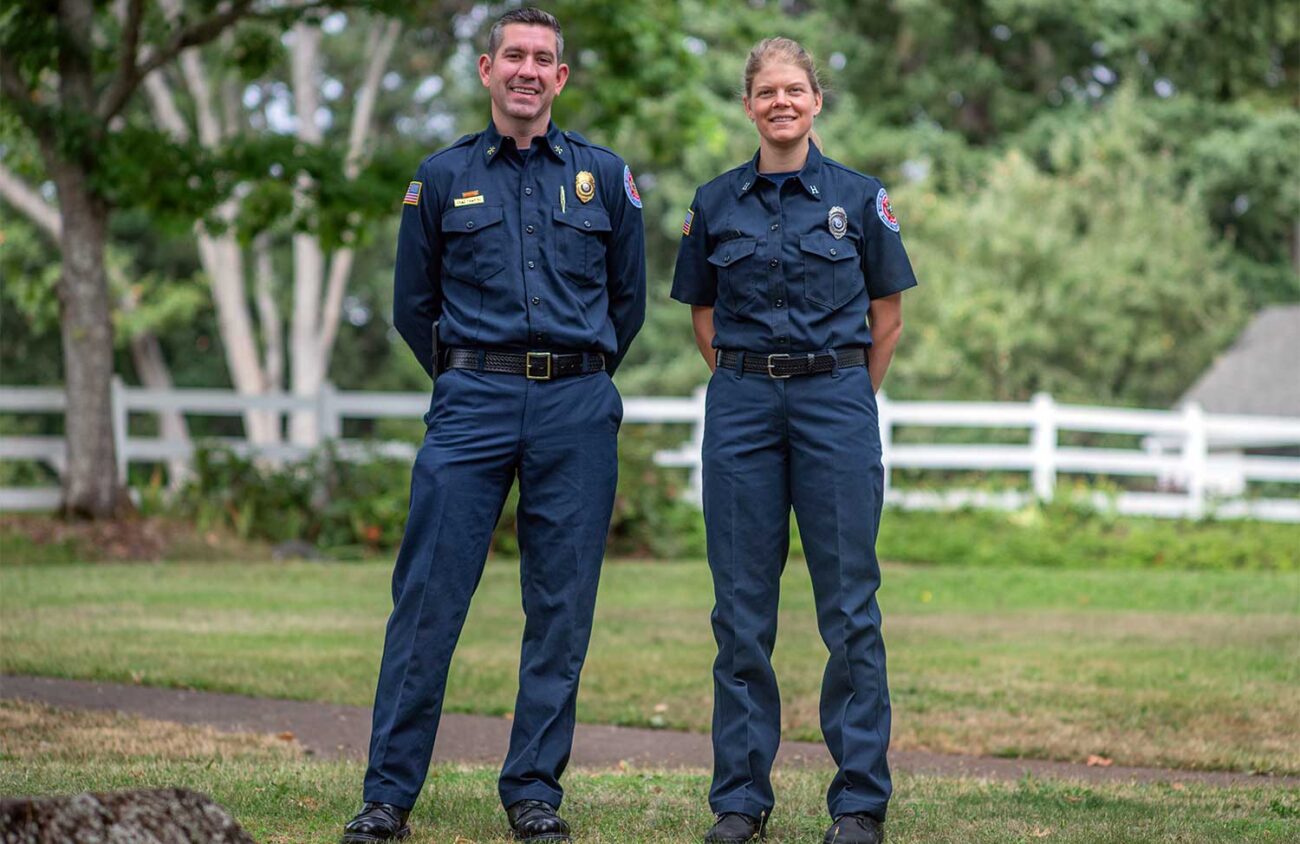So while wildfires have been tearing through Oregon faster and harder than my favorite death metal albums, two representatives from the Oregon State Fire Marshal, Chad Hawkins and Leslie Neu, have been on their own tear through the state.
Hawkins and Neu have been touring Oregon giving defensible space talks to media outlets. Making stops in southern Oregon, Bend, Eugene and Portland, their goal is to educate as many people as possible on the defensible space program.
The defensible space program aims to reduce the risk of wildfires as well as ensuring the protection of property. According to Hawkins, defensible space means a buffer that is created between any building and the surrounding trees, bushes, etc. A suitable defensible space distance would be 100 feet, but Hawkins says that the first five feet are the most important.
The Oregon State Fire Marshal has teamed up with local fire agencies so that Oregon residents can request a defensible space assessment. This allows Oregonians to connect with the necessary resources to make sure their home can withstand a wildfire. Defensible space requests can be made through the Oregon State Fire Marshal’s website.
Due to the spread of wildfires, ensuring good defensible space across a community is vital. “It is a community-based approach,” says Neu, the defensible space program coordinator. Even if one house in a neighborhood’s defensible space is not up to snuff, it could jeopardize another house. Hawkins highlighted that 70 percent of buildings catch fire from ember showers.
Some steps any home and business owners can take would be to clear the canopy of any flammable debris, and to cut the branches six feet and below of any tree more than 18 feet tall. Hawkins and Neu also suggest that you clear out your gutters and to put up a wire mesh with holes measuring one eighth of an inch on any vents along the side of the building in question. The wire mesh acts as a seal to prevent embers from coming inside your home or business and starting an attic fire, which according to Hawkins is very difficult to fight. “The number one thing is embers,” Hawkins says.
According to Hawkins and Neu, the end goal of the program is to ensure that Oregonians can prevent any destruction to their property caused by wildfires as well as educating the general public in wildfire prevention.
More information can be found at Oregon.gov/osfm/pages/default.aspx.
